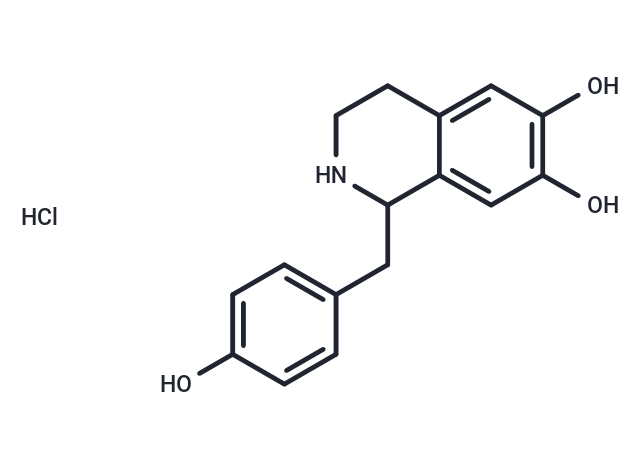Shopping Cart
- Remove All
 Your shopping cart is currently empty
Your shopping cart is currently empty

Higenamine hydrochloride (norcoclaurine HCl) has been demonstrated to be a β2 adrenoreceptor agonist. Adrenergic receptors, or adrenoceptors, belong to the class of G protein–coupled receptors, and are the most prominent receptors in the adipose membrane, besides also being expressed in skeletal muscle tissue.

| Pack Size | Price | Availability | Quantity |
|---|---|---|---|
| 100 mg | $42 | In Stock | |
| 1 mL x 10 mM (in DMSO) | $46 | In Stock |
| Description | Higenamine hydrochloride (norcoclaurine HCl) has been demonstrated to be a β2 adrenoreceptor agonist. Adrenergic receptors, or adrenoceptors, belong to the class of G protein–coupled receptors, and are the most prominent receptors in the adipose membrane, besides also being expressed in skeletal muscle tissue. |
| Alias | norcoclaurine HCl, Higenamine Hydrochloride, Higenamine HCl, Demethylcoclaurine hydrochloride, (+-)-Demethylcoclaurine hydrochloride |
| Molecular Weight | 307.772 |
| Formula | C16H18ClNO3 |
| Cas No. | 11041-94-4 |
| Smiles | Cl.Oc1ccc(CC2NCCc3cc(O)c(O)cc23)cc1 |
| Relative Density. | no data available |
| Storage | Powder: -20°C for 3 years | In solvent: -80°C for 1 year | Shipping with blue ice. | |||||||||||||||||||||||||||||||||||
| Solubility Information | DMSO: 65 mg/mL (211.2 mM), Sonication is recommended. | |||||||||||||||||||||||||||||||||||
Solution Preparation Table | ||||||||||||||||||||||||||||||||||||
DMSO
| ||||||||||||||||||||||||||||||||||||

Copyright © 2015-2025 TargetMol Chemicals Inc. All Rights Reserved.